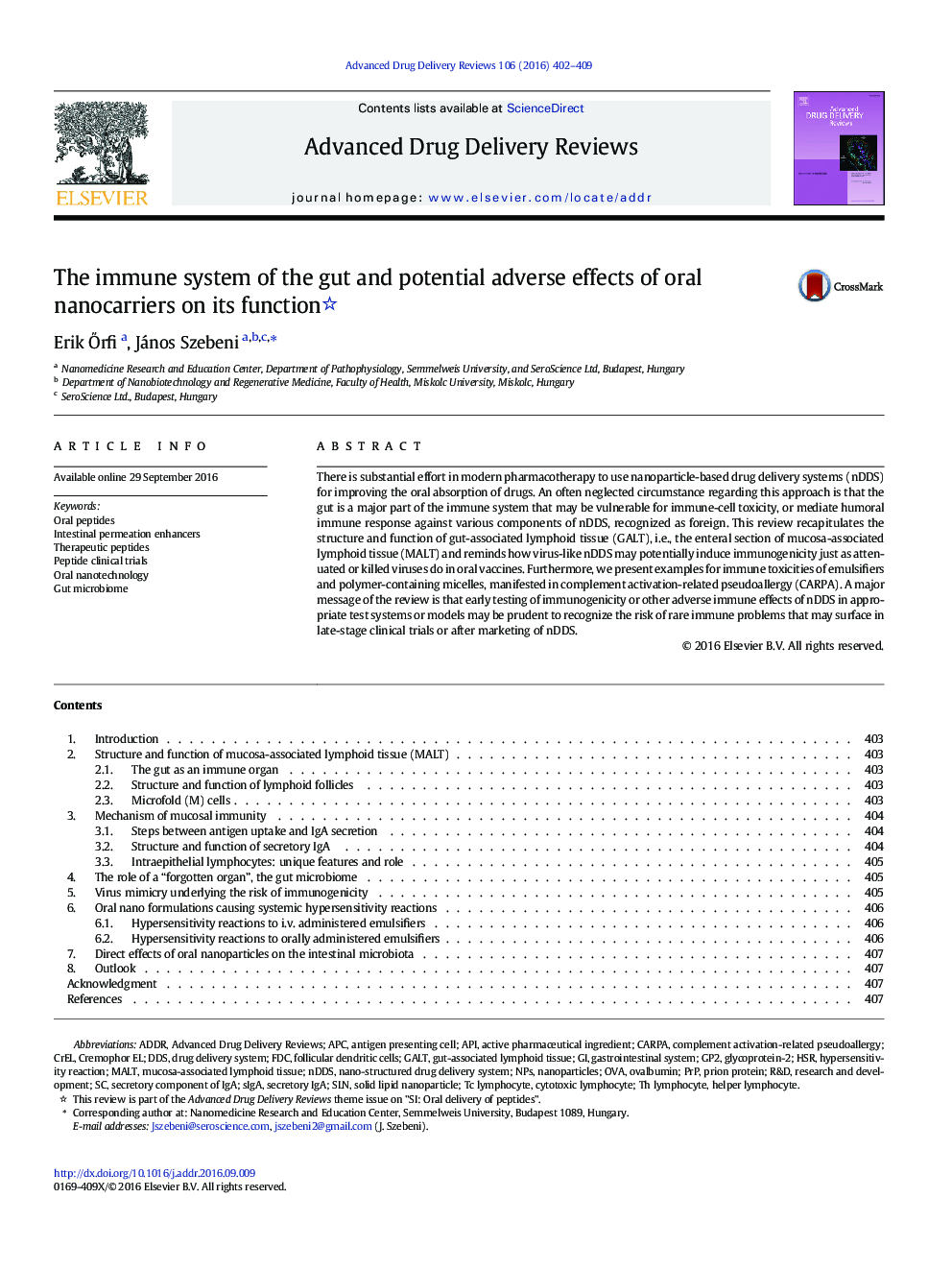| Article ID | Journal | Published Year | Pages | File Type |
|---|---|---|---|---|
| 5520154 | Advanced Drug Delivery Reviews | 2016 | 8 Pages |
There is substantial effort in modern pharmacotherapy to use nanoparticle-based drug delivery systems (nDDS) for improving the oral absorption of drugs. An often neglected circumstance regarding this approach is that the gut is a major part of the immune system that may be vulnerable for immune-cell toxicity, or mediate humoral immune response against various components of nDDS, recognized as foreign. This review recapitulates the structure and function of gut-associated lymphoid tissue (GALT), i.e., the enteral section of mucosa-associated lymphoid tissue (MALT) and reminds how virus-like nDDS may potentially induce immunogenicity just as attenuated or killed viruses do in oral vaccines. Furthermore, we present examples for immune toxicities of emulsifiers and polymer-containing micelles, manifested in complement activation-related pseudoallergy (CARPA). A major message of the review is that early testing of immunogenicity or other adverse immune effects of nDDS in appropriate test systems or models may be prudent to recognize the risk of rare immune problems that may surface in late-stage clinical trials or after marketing of nDDS.
